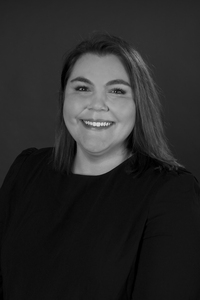The Secrets to Boosting Remote-Team Productivity and Performance


To attract talent, employers need to offer remote and hybrid work, yet also need to create innovative arrangements that work for both the individual employees and the organization. Employees tend to think they're more productive working from home, yet research indicates that's not always the case. How to bridge the gap and ensure optimal performance?
“Leaders need to know how to support these distributed workforces in ways that don’t just ensure that they’re physically at work every day, but that they’re performing their best in a sustainable way,” said Sarah Altemus, productivity lab manager at ActivTrak. “This will be a real differentiator for organizations,” she said during a From Day One webinar.
ActivTrak provides interactive dashboards and modern software to help employers and managers gain insight into maximizing remote and hybrid workplace productivity. These tools help measure utilization, identify signs of individual burnout, summarize daily and weekly goal progress, and develop more balanced workloads.
Leah Ivory, solution consultant at ActivTrak discussed key dashboards and reports that provide employers and their managers with the tools to identify key results areas, measure individual productivity, measure team utilization, and spot opportunities to reestablish workload balance and engagement.
ActivTrak’s software integrates direct email communication to foster coaching discussions among managers and individual team members to strategize performance plans and solutions to engagement challenges.
Their one-stop dashboard provides a 30,000-foot organizational and team management system using graphs and charts that can be broken down by department, region, or group. It should be referred to daily to track engagement levels in real-time and over the previous 30-day period to measure goal progress. Users can also see team productivity metrics for every member and weekly utilization trends. Other insights include workload balance reports, coaching and personal insights, and more.
These innovative tools help strategize high productivity in remote and hybrid settings. In 2024, most businesses have adapted to offering remote and hybrid work to keep talent. However, without referring to data there is no assurance that investing more in remote or hybrid work policies will be sustainable.
Employers often omit key insights by looking at traditional outputs that deliver results like production, revenue, and quality. Altemus says that insights into the inputs, like how employees work, how to use technology, how processes are adapted, and how training influences behavior, offer valuable insights into optimizing remote and hybrid work performance combined with output insights.

“What happens when we don’t track the inputs is we put ourselves in a position where maybe we overhire, and when we overhire, we’ll have low utilization elsewhere in the organization. We buy technology that goes underutilized and have higher technology costs as a result of it.”
Analytical tools revealing personal insights get to the root of the inputs: they identify who is overworking or underworking, who works better and where, and more information that gives employers and managers the opportunity to address the oncoming burnout or disengagement of a team member. Goals can be restructured and more personalized to improve productivity.
The ability for managers to access the personal insights of every individual team member presents a highly personalized one-on-one coaching opportunity to strategize a performance plan supporting their upward mobility based on their projects, location where their productivity is the most efficient, or restoring their workload balance.
“We’re really committed to being an employee-centric tool, empowering employees with their own data or providing the right level of information to the right level of people in the organization. We’re making sure that executives have access to the data they need for decision-making and managers are able to be effective,” said Altemus.
Editor's note: From Day One thanks our partner, ActivTrak, for sponsoring this webinar.
Stephanie Reed is a freelance news, marketing, and content writer. Much of her work features small business owners throughout diverse industries. She is passionate about promoting small, ethical, and eco-conscious businesses.
The From Day One Newsletter is a monthly roundup of articles, features, and editorials on innovative ways for companies to forge stronger relationships with their employees, customers, and communities.